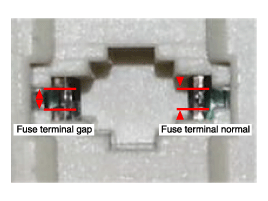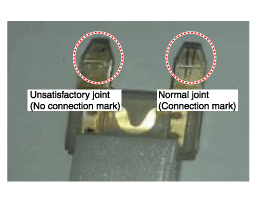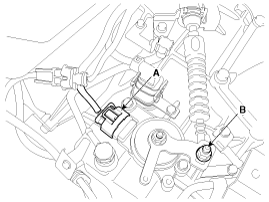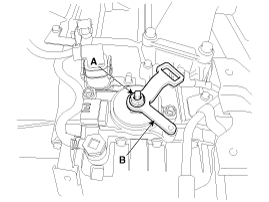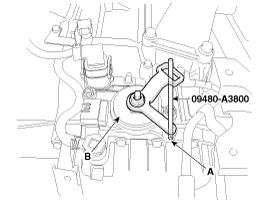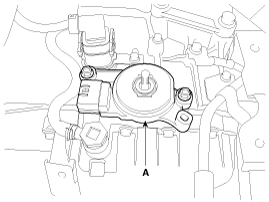Hyundai Tucson: Automatic Transaxle Control System / Inhibitor Switch Repair procedures
Hyundai Tucson (LM) 2010-2015 Service Manual / Automatic Transaxle System / Automatic Transaxle Control System / Inhibitor Switch Repair procedures
| Inspection |
|
Inspection flow
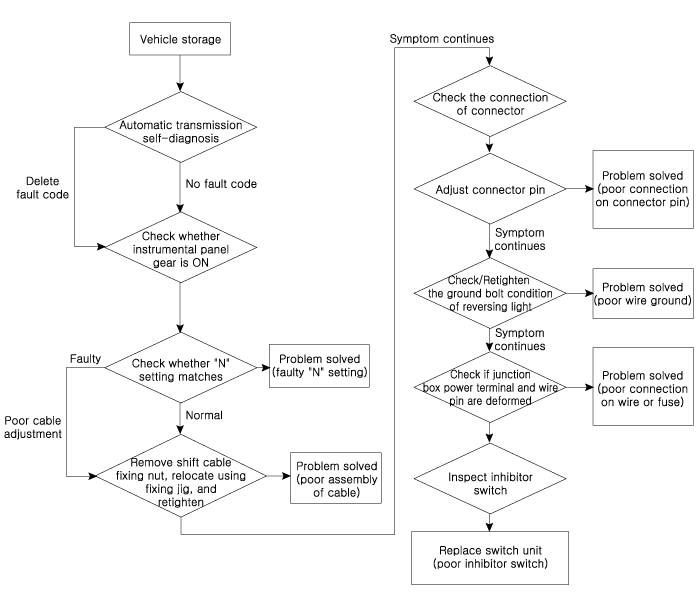
Items to check
| 1. |
Inspect DTC code. |
| 2. |
Inspect whether N setting matches.
|
| 3. |
Inspect shift cable separation.
|
| 4. |
Inspect whether connector is connected.
|
| 5. |
Inspect ground condition on reversing light circuit.
|
| 6. |
Inspect wiring connection on junction box power terminal and fuse lamp.
|
| 7. |
Inspect inhibitor switch signal.
|
| Removal |
| 1. |
Set shift lever to "N" position. |
| 2. |
Remove the air duct.
(Refer to Engine Mechanical System - "Air cleaner") |
| 3. |
Remove the battery and the battery tray.
(Refer to Engine Electrical System - "Battery") |
| 4. |
Disconnect the inhibitor switch connector (A). |
| 5. |
Remove the shift cable mounting nut (B).
|
| 6. |
Remove the manual control lever (B) and the washer after removing a nut (A).
|
| 7. |
Remove the inhibitor assembly (A) after removing the bolts (2ea).
|
| Installation |
| 1. |
Install in the reverse order of removal. |
 Inhibitor Switch Troubleshooting
Inhibitor Switch Troubleshooting
Fault Diagnosis
Fault Diagnosis for Symptom
Major Symptom Expected Cause Items to Check and Measures Shift lever not operating Gear not marked on cluster Shock occurs wh ...
 Shift Lever Components and Components Location
Shift Lever Components and Components Location
Components
1. Shift lever knob 2. Shift lever assembly3. Shift cable4. Manual control lever5. Shift cable retainer
...
Other information:
Hyundai Tucson (LM) 2010-2015 Service Manual: Front Door Components and Components Location
Components
1.Door inside handle housing2. Door trim3. Door belt inner weatherstrip 4. Door screen 5. Door module 6. Quadrant inner cover 7. Door panel 8. Door belt outside weatherstrip9. Door side weatherstrip10. Body side weatherstrip11. Door hinge
...
Hyundai Tucson (LM) 2010-2015 Service Manual: Console Components and Components Location
Components
[A/T]
1. Floor console2. Console upper cover (AT)3. Floor console tray4. Floor console bezel5. Extension side cover
...
© 2010-2025 www.htmanual.net


